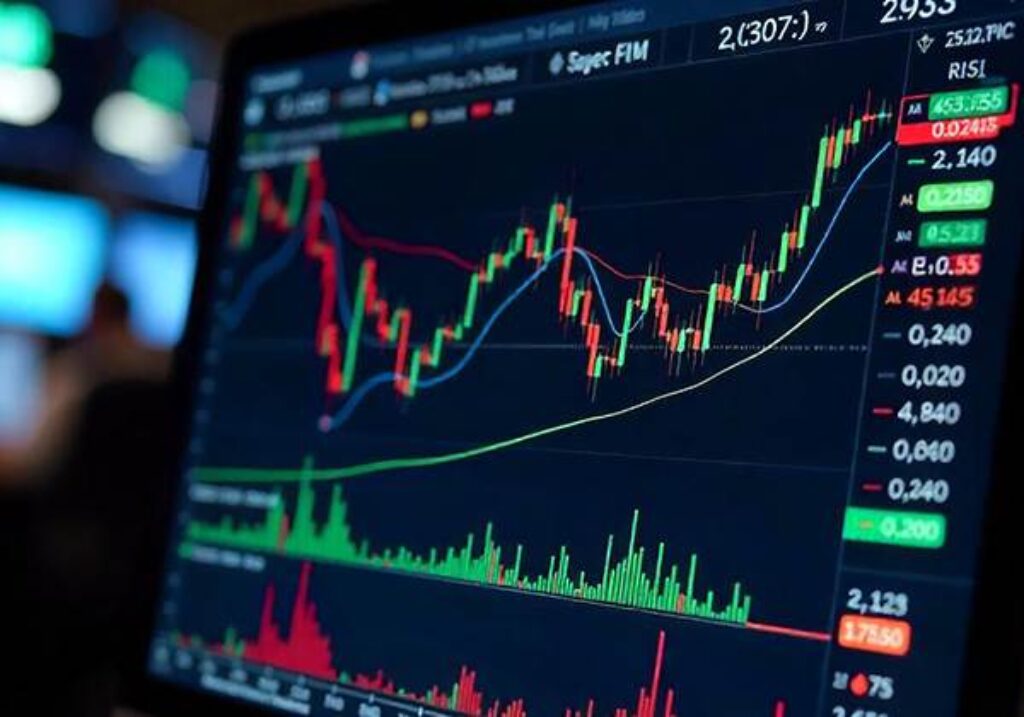Popular Technical Indicators: How to Use RSI, MACD, Moving Averages & Bollinger Bands
Technical indicators are essential tools used by traders to analyze price action, identify trends, and time their entries and exits more effectively. In this guide, we’ll explore the most popular technical indicators that every trader should know — including Moving Averages, Relative Strength Index (RSI), MACD, and Bollinger Bands.

If you’re new to technical analysis, understanding these indicators can boost your confidence and accuracy in the markets.
What Are Technical Indicators?
Technical indicators are mathematical calculations based on the price, volume, or open interest of a security. These tools are used to:
- Identify market trends
- Measure momentum
- Confirm signals
- Spot potential reversals
While indicators shouldn’t be used in isolation, they are powerful when combined with price action, chart patterns, and support/resistance analysis.
Let’s look at the most popular technical indicators and how they are applied in trading.
1. Moving Averages (MA)
Moving Averages smooth out price data to help identify the direction of the trend.
- Simple Moving Average (SMA): Calculates the average price over a set period (e.g., 50-day or 200-day).
- Exponential Moving Average (EMA): Gives more weight to recent prices, making it more responsive to changes.
How to use:
- Trend direction: If price is above the moving average, the trend is generally up.
- Crossovers: A short-term MA crossing above a long-term MA (e.g., 50 EMA crossing 200 EMA) is considered a bullish signal.
Moving averages are widely used as dynamic support/resistance levels.
2. Relative Strength Index (RSI)
The RSI is a momentum indicator that measures the speed and change of price movements. It ranges from 0 to 100.
- Above 70: Overbought (possible reversal or pullback)
- Below 30: Oversold (possible bounce or rally)
How to use:
- Spot divergence: If price makes a new high but RSI doesn’t, it may signal a weakening trend.
- Look for entry points: Combine RSI signals with support/resistance or trendlines.
The RSI is a favorite among traders for identifying momentum shifts.
3. MACD (Moving Average Convergence Divergence)
The MACD is a trend-following momentum indicator that shows the relationship between two EMAs (typically 12 and 26 periods).
Components:
- MACD Line = 12 EMA – 26 EMA
- Signal Line = 9-period EMA of the MACD line
- Histogram = Difference between MACD and Signal Line
How to use:
- Bullish crossover: MACD line crosses above the signal line
- Bearish crossover: MACD line crosses below the signal line
- Look for divergence between MACD and price to detect possible reversals
MACD is especially powerful in trending markets.
4. Bollinger Bands
Bollinger Bands consist of:
- A middle band (20-period SMA)
- An upper band and lower band that are typically 2 standard deviations away from the SMA
How to use:
- Price touching upper band: Overbought signal
- Price touching lower band: Oversold signal
- Squeeze: When bands narrow, a breakout is likely coming
- Breakout: Price moving outside the band can indicate strong momentum
This indicator helps traders measure volatility and potential breakout zones.
Tips for Using Technical Indicators Effectively
- Avoid overloading your chart with too many indicators.
- Combine indicators with price action and chart patterns.
- Look for confirmation signals — don’t trade based on one indicator alone.
- Use indicators in different categories: trend (e.g., MA), momentum (e.g., RSI), and volatility (e.g., Bollinger Bands).
Final Thoughts
Mastering these popular technical indicators can help you gain a solid foundation in chart-based trading. Whether you’re identifying trends with Moving Averages, spotting momentum shifts with RSI, or analyzing volatility with Bollinger Bands, these tools add structure and clarity to your trading decisions.
Start by applying one or two indicators and practice spotting signals on demo charts. With consistent use and experience, you’ll be able to integrate these indicators into a robust trading strategy.







